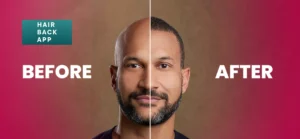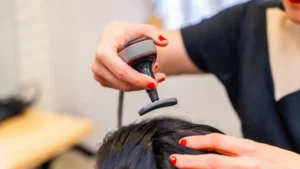Hair Transplants for Different Ethnicities have become increasingly popular as a solution for individuals experiencing hair loss, offering the promise of restoring natural hair growth and enhancing confidence.
However, the effectiveness of a hair transplant largely depends on understanding the unique characteristics of different ethnicities. Personalizing techniques to match the specific needs of each individual is crucial for achieving optimal results.
My name is Emma Wright, your resident hair restoration specialist. With the deeply researched article, I write on Hair Transplants for Different Ethnicities. This article explores the importance of customized hair transplant techniques for different ethnicities, the challenges involved, and the success stories that highlight the benefits of such an approach
Importance of Personalized Techniques for Different Ethnicities
Hair loss affects people from all walks of life, but the nature of hair loss and the characteristics of hair vary significantly among different ethnicities. These differences mean that a one-size-fits-all approach to hair transplantation often falls short.
By recognizing and embracing these differences, medical professionals can tailor their techniques to ensure that each patient receives the most effective and natural-looking results. Hair Transplants for Different Ethnicities consider various factors, including hair texture, density, curl pattern, and scalp characteristics, which vary across ethnic groups.
Hair Characteristics: How Hair Type and Texture Vary Among Ethnicities
-
Asian Hair Characteristics
Asian hair tends to be straight and thick, with a round cross-section. It usually has a high density, which can present both opportunities and challenges in Hair Transplants for Different Ethnicities.
While the thickness and density can provide excellent coverage, the straight nature of the hair requires precise placement to achieve a natural look. Adopting techniques from FUT and FUE Hair Transplant methods can help surgeons address these unique challenges effectively.
-
African Hair Characteristics
African hair is often characterized by tight curls or coils, with a flattened oval cross-section. This type of hair can be more fragile and prone to breakage, which requires a gentle approach during transplantation.
The curl pattern also affects how hair should be placed to ensure that the final result appears full and natural in Hair Transplants for Different Ethnicities. Advances in hair transplant innovation have led to techniques that respect the natural curl pattern and hair fragility.
-
Caucasian Hair Characteristics
Caucasian hair varies widely in texture, color, and density. It can range from straight to wavy or curly, with a round to oval cross-section.
The diversity within this group necessitates a careful assessment of individual hair characteristics to determine the best Hair Transplants for Different Ethnicities techniques. Surgeons must also consider seasonal hairline care tips to maintain the transplant’s effectiveness and appearance throughout the year.
-
Latino Hair Characteristics
Latino hair often shares characteristics with both Caucasian and African hair, exhibiting a wide range of textures and curl patterns. This diversity requires a nuanced approach in Hair Transplants for Different Ethnicities to ensure that hair transplants align with the individual’s natural hair characteristics.
Understanding the impact of smoking on hair transplant outcomes is essential, as lifestyle factors can influence the success of the procedure.
Customized Approaches: Techniques Tailored to Specific Ethnic Hair Needs
-
Follicular Unit Extraction (FUE) for Asian Hair
For patients with Asian hair, Follicular Unit Extraction (FUE) is often recommended. This technique involves harvesting individual hair follicles and allows for precise placement, which is essential given the straight nature of Asian hair.
The thickness and density of Asian hair can help create a fuller appearance, but careful attention must be paid to the angle and direction of hair growth in Hair Transplants for Different Ethnicities.
-
Follicular Unit Transplantation (FUT) for African Hair
Follicular Unit Transplantation (FUT) is commonly used for African hair types in Hair Transplants for Different Ethnicities. This technique involves removing a strip of scalp and dissecting it into individual follicular units.
The tight curl pattern of African hair can be challenging, but experienced surgeons can use FUT to maximize the use of available donor hair. Special care is taken to match the natural curl pattern and ensure that the transplanted hair blends seamlessly with existing hair. Benefits of hair restoration for African hair types include improved density and a more natural hairline.
-
Combination Techniques for Caucasian Hair
Due to the diversity within Caucasian hair, a combination of FUE and FUT techniques may be used in Hair Transplants for Different Ethnicities. This approach allows for flexibility in addressing various hair textures and densities.
Surgeons can tailor the technique to match the specific needs of the patient, ensuring that the transplanted hair appears natural and blends well with the surrounding hair. Awareness of hair transplant scams is crucial for patients seeking these procedures to avoid unqualified practitioners.
-
Hybrid Approaches for Latino Hair
Latino hair, with its wide range of textures, may benefit from hybrid approaches that incorporate elements of both FUE and FUT. Surgeons assess the unique characteristics of the patient’s hair to determine the most suitable technique in Hair Transplants for Different Ethnicities, ensuring that the final result is cohesive and natural-looking.

Challenges and Solutions: Addressing Common Challenges in Diverse Hair Types
-
Handling Curl Patterns in African Hair
One of the main challenges with African hair is managing the tight curl pattern during transplantation. Surgeons must carefully orient the transplanted follicles to match the natural curl, which requires a deep understanding of the hair’s growth pattern. Additionally, the fragility of African hair necessitates a gentle approach to avoid damage in Hair Transplants for Different Ethnicities.
-
Achieving Natural Density in Asian Hair
While Asian hair typically has a high density, achieving a natural look requires careful planning in Hair Transplants for Different Ethnicities. The straight nature of the hair can make any imperfections more noticeable, so surgeons must be meticulous in the placement of each follicle. Matching the direction and angle of natural hair growth is crucial for a seamless appearance.
-
Balancing Diversity in Caucasian Hair
The wide range of textures and densities in Caucasian hair presents a unique challenge in Hair Transplants for Different Ethnicities. Surgeons must assess each patient individually to determine the best approach, considering factors such as hair thickness, curl pattern, and color. Customized techniques help ensure that the transplanted hair matches the patient’s natural characteristics.
-
Managing Mixed Characteristics in Latino Hair
Latino hair can exhibit characteristics from multiple ethnicities, requiring a nuanced approach in Hair Transplants for Different Ethnicities. Surgeons must carefully evaluate the patient’s hair type and tailor their technique accordingly. By combining elements of different transplantation methods, surgeons can address the unique needs of Latino patients and achieve successful outcomes.
Success Stories: Case Studies Showcasing Tailored Transplant Success
-
Case Study 1: Asian Hair Transplant Success
A 35-year-old Asian male experienced hair loss along the hairline and crown. Using FUE, the surgeon carefully extracted and placed individual follicles to match the natural hair growth pattern. The result was a full and natural-looking hairline that blended seamlessly with the patient’s existing hair, showcasing the success of Hair Transplants for Different Ethnicities in restoring his confidence.
-
Case Study 2: African Hair Transplant Success
A 28-year-old African American female sought a solution for thinning hair around the edges. The surgeon opted for FUT to maximize the use of donor hair and carefully matched the curl pattern of the transplanted hair with the patient’s natural hair. The outcome was a fuller and more even hairline, enhancing the patient’s overall appearance and highlighting the effectiveness of Hair Transplants for Different Ethnicities.
-
Case Study 3: Caucasian Hair Transplant Success
A 42-year-old Caucasian male with wavy hair underwent a combination of FUE and FUT to address hair loss in the frontal area. The surgeon meticulously matched the wave pattern and density, resulting in a natural and youthful look that complemented the patient’s facial features, exemplifying the tailored approach of Hair Transplants for Different Ethnicities.
-
Case Study 4: Latino Hair Transplant Success
A 30-year-old Latino male with a mix of straight and wavy hair experienced hair loss at the temples. The surgeon employed a hybrid approach, using FUE for precise placement and FUT for density. The result was a natural hairline that matched the patient’s diverse hair characteristics, providing a harmonious and pleasing appearance through Hair Transplants for Different Ethnicities.
Final Words
The success of Hair Transplants for Different Ethnicities hinges on the ability to tailor techniques to the unique characteristics of each individual’s hair. Understanding and respecting the diversity of hair types and textures is crucial for achieving natural and satisfying results.
Personalized approaches not only enhance the appearance of the transplanted hair but also boost the confidence and self-esteem of patients. As hair transplant technology continues to advance, embracing diversity and customization will remain at the forefront of achieving the best possible outcomes for individuals from all ethnic backgrounds.














